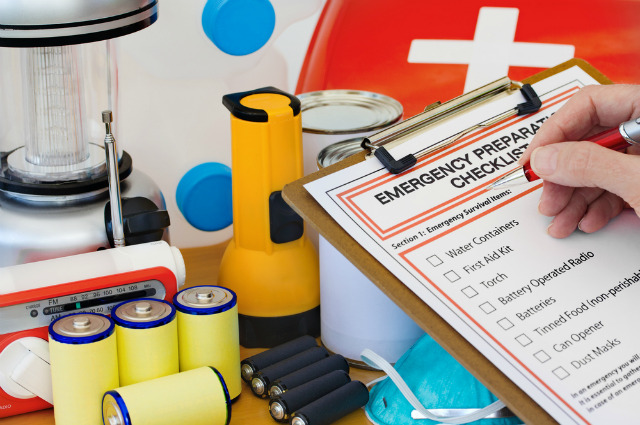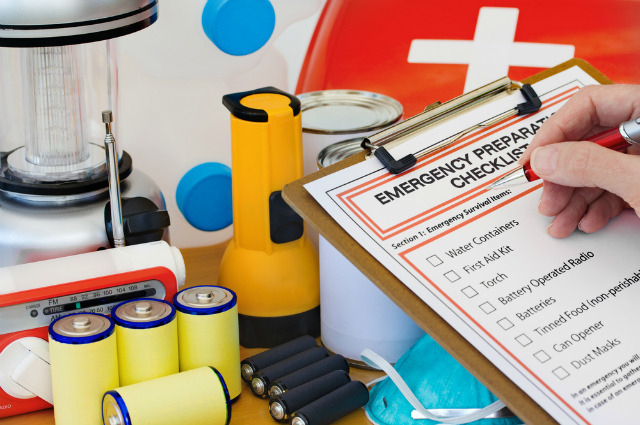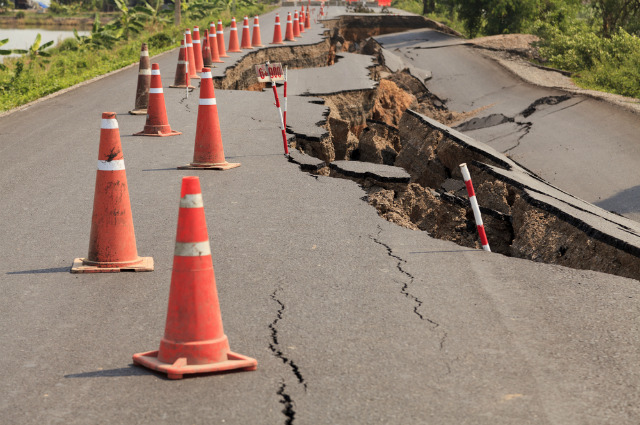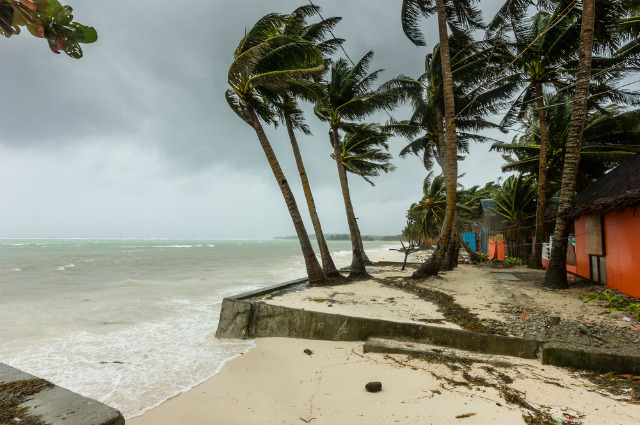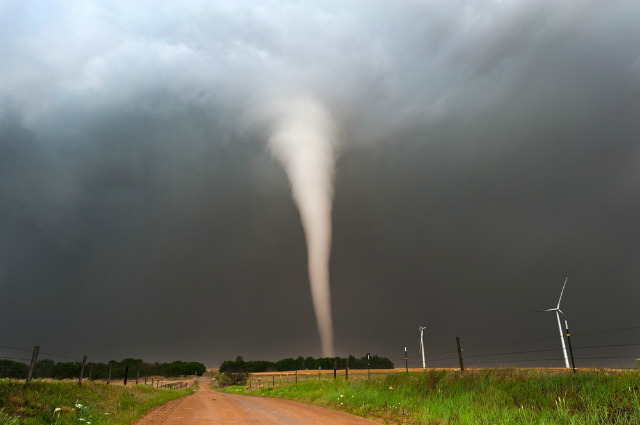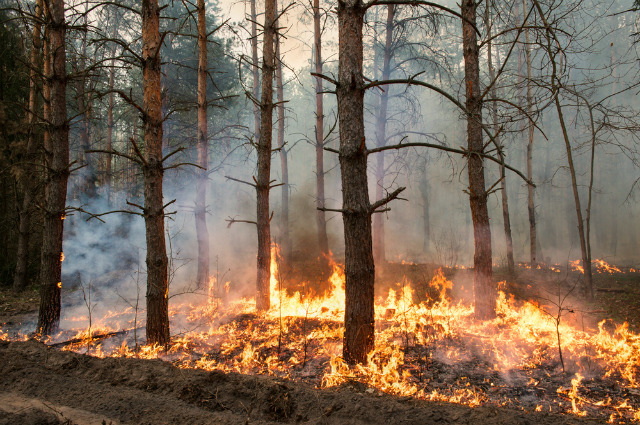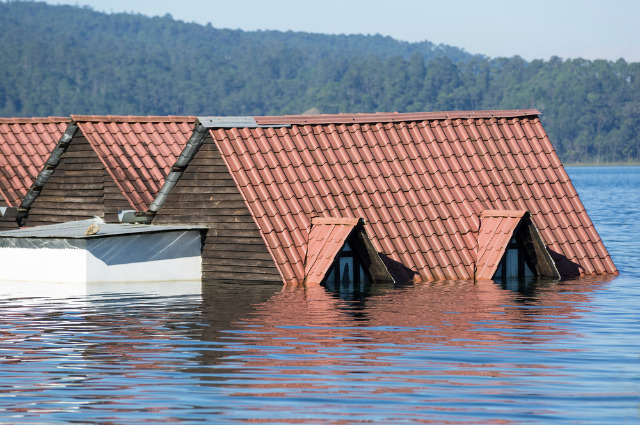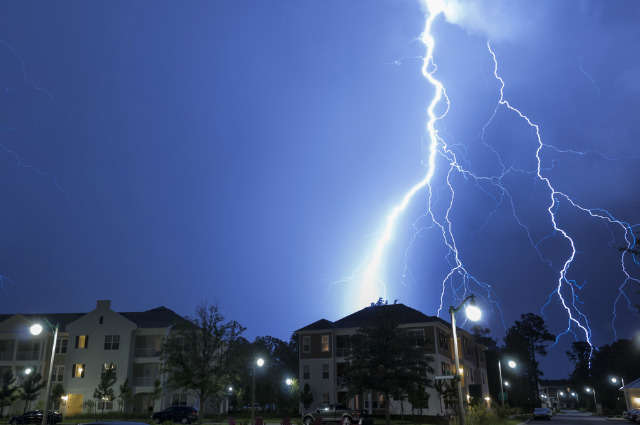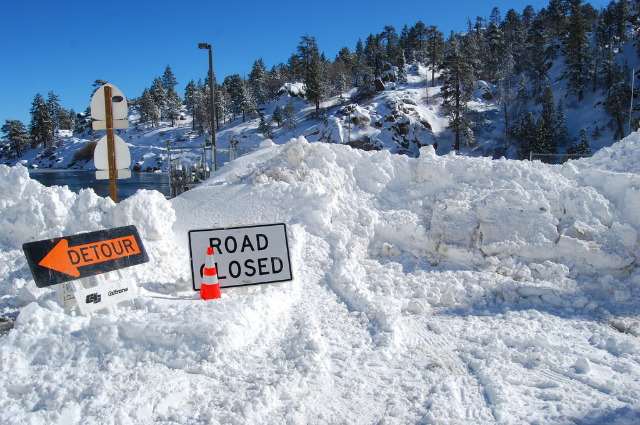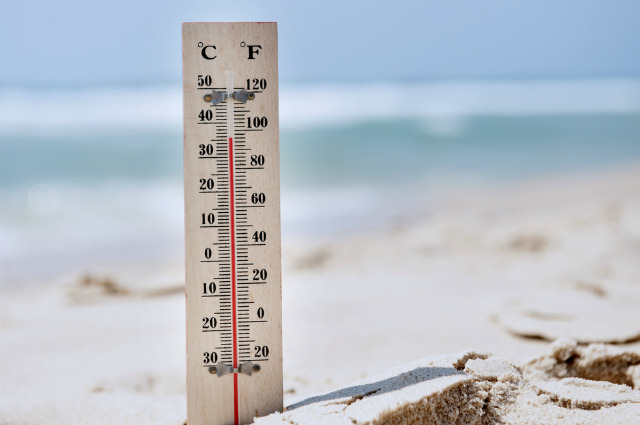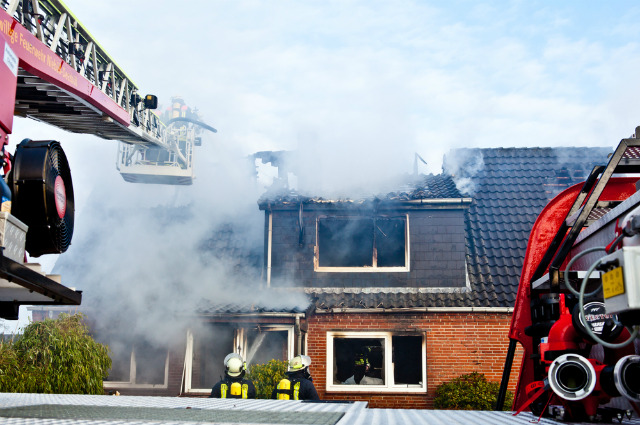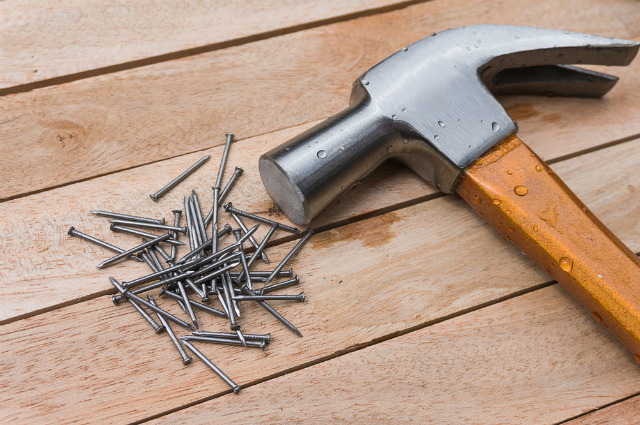10 Natural Disasters Everyone Should Be Prepared For, And How To Plan For Each
We may receive a commission on purchases made from links.
10 Natural Disasters Everyone Should Be Prepared For, And How to Plan for Each
It seems we read and hear about natural disasters nearly every day in the news, yet for most, it's still so easy to take on that "it'll never happen to me" mindset.
The truth is, though, a disaster or emergency situation could happen to anyone. In fact, even FEMA says far too many people think they don't need to worry about disasters where they live.
"Emergency preparedness is not only for Californians, Midwesterners and Gulf Coast residents," the organization notes. "Most communities may be impacted by several types of hazards during a lifetime. Knowing what to do before, during and after an emergency is a critical part of being prepared and may make all the difference when seconds count."
According to Robert Richardson, founder and writer at Off Grid Survival, a top emergency preparedness and survival website, when it comes to preparation, one of the first steps you should take involves assessing your risk based on where you live.
"When preparing for any type of disaster, the first place you need to start is to take a good look at what types of disasters have historically affected your region of the world," Richardson said. "Next, you want to find out how people reacted to those disasters in the past. How did first responders handle the situation, were there localized dangers that happened as a result of the disaster that you need to be aware of?"
Richardson explained that in his experience, people make the mistake of diving into a preparedness plan without having a good understanding of the threats they face. On his site, he offers a complete risk and threat assessment guide.
September is National Preparedness Month, so if you haven't already reviewed your risks and created an emergency preparedness plan, right now is a better time than ever to get started. To get started, Richardson suggests first focusing on the basic necessities of life. "That means stocking up on water, food, shelter and self-defense protection," he said. "For small scale-disasters you should have at least two-weeks' worth ofemergency supplies on hand at all times — plan on being without access to outside services for at least that amount of time."
Richardson also recommends developing an emergency evacuation plan.
"Depending on the disaster, there may come a time where staying inside your home becomes a threat to your health and safety," he explained. "Natural disasters like hurricanes, wildfires and earthquakes can quickly cause a situation where you are forced to leave."
This, Richardson noted, means you should also have an "emergency go-bag" (filled with emergency gear) ready and waiting to go and a concrete plan detailing where you will go and how you will get there. Beyond that, once you've determined which types of disasters you're most at risk for, it's important to know the unique challenges you may face with each and what to do if they arise. Here's a look at some of the most common natural disasters that occur in the U.S. and what you can do to prepare for each.
Earthquakes
According to the Unites States Geological Survey (USGS), the U.S. states most likely to be hit by an earthquake include Alaska, California, Hawaii, Nevada and Washington. However, FEMA notes that all 50 states and even the five U.S. territories are at some risk for an earthquake, which can happen at any time of the year.
How to Prepare: "Before an earthquake occurs, secure any items that could fall and cause injuries," said Sean Scott, a disaster restoration contractor by trade and the author of the disaster preparedness and recovery book, The Red Guide to Recovery – Resource Handbook for Disaster Survivors. "Museum putty works great for small items and wall anchors can be used to secure furniture." He also said you should identify safe places for cover, like under a sturdy piece of furniture or against an interior wall in your home, office or school. "Practice how to 'Drop, Cover, and Hold On,'" Scott added. "When the shaking starts, you drop to the ground, cover your head and neck with your arms, and hold on." Additionally, beforehand, you'll want to make sure you've stored critical supplies for you, your family and any pets, and don't forget to establish a plan for how you will communicate with family members. Scott suggests the American Red Cross Safe & Well website as a critical communication resource.
Hurricanes
AccuWeather reports that Florida (Miami, Tampa and Key West particularly), North Carolina (Cape Hatteras) and Louisiana (New Orleans) are among the top U.S. areas most at risk for hurricanes. Of course, like with most of Mother Nature's wrath, no area is immune to this type of disaster.
How to Prepare: Again, in the event of an evacuation, it's important to know where you plan to go and what route you'll take to get there. Scott also suggests that you have a disaster supply kit on hand. It should include a flashlight, batteries, cash, first aid supplies and copies of your critical information. If you're not advised to evacuate and choose to stay, it's important to make sure you're stocked with adequate supplies including light and water in case utilities become unavailable. Additionally, if you know a hurricane is on the way, you should trim or remove damaged or dead tree limbs to help protect your home and property.
Tornadoes
The National Oceanic and Atmosphere Administration (NOAA) notes that Oklahoma, Texas and Florida typically have the highest concentration of tornadoes in the U.S., but, just like with earthquakes, tornadoes can also happen anywhere. According to FEMA, tornadoes most commonly occur east of the Rocky Mountains during spring and summer. Peak tornado season in the south happens from March through May and in northern states late in spring through early summer.
How to Prepare: "Listen to NOAA Weather Radio for the latest information and look for tornado danger signs," Scott said. Warning signs include: a dark, often greenish sky, large hail, a large, dark, low-lying cloud (particularly if rotating) and a loud roar (similar to a freight train). To stay safe in your home, Scott says you should retreat to a basement, storm cellar or an interior room with no windows on the lowest floor of your house. He also suggests practicing periodic tornado drills so everyone in your family knows what to do if one occurs. Also, "Consider having your safe room reinforced," Scott said. "Plans for reinforcing an interior room to provide better protection can be found on the FEMA website." Finally, you should prepare for high winds by removing dead or damaged limbs from nearby trees and moving or securing your lawn furniture, trash cans, hanging plants and anything else that can be picked up by wind.
Wildfires
2013 data from the National Interagency Fire Center (NIFC) shows that California, North Carolina, Georgia, Oregon and Arizona are among some of the top states most at risk for wildfires.
How to Prepare: First, if you see a wildfire but haven't been ordered to evacuate yet, call 911 immediately. If you're ordered to evacuate, leave right away and stay in communication with family or friends — let them know where you're going and when you arrive. You should also come up with an evacuation plan beforehand, mapping out your route and planning where you'll go. "Maintain a cleared defensible space around your home that is free of anything that will burn, such as wood piles, dried leaves and brush," Scott said. Additionally, he suggests you review your homeowner's insurance policy and create an inventory of your personal property using the Personal Property Memory Jogger tool. For more details on how to best prepare for a wildfire see ReadyForWildfire.org.
Floods
Floods can strike anywhere, but some areas are more prone than others, so the first step in preparation is determining your flood risk, which you can do at FloodRisk.gov.
How to Prepare: Stay in tune with local weather updates and emergency instructions. If flooding is in the forecast, get ready by first bringing your outdoor furniture inside and moving your most valuable indoor items to the highest floor in your home. Next, disconnect electrical appliances and if instructed, turn off your gas and electricity at their main switches. Prepare for possible evacuation by detailing a safe destination and the route you'll use to get there. If you're ordered to evacuate, do so right away. However, always avoid walking or driving through flood waters. According to FEMA, just six inches of moving water can knock you over and about two feet can sweep your vehicle away. Additionally, Scott noted, if there's a chance of a flash flood, you should move to higher ground immediately. FEMA says flash floods are the number one cause of weather-related deaths in the U.S.
Landslides
Landslides and other "debris flow" disasters occur in all U.S. states, according to FEMA. They can result from everything from earthquakes and storms to volcanic eruptions, fires and manmade land modifications. Additionally, areas affected by brush and forest fires may be at greater risk due to a lower threshold of precipitation.
How to Prepare: Begin with the basics by having both an emergency kit and communication plan on hand. Next, FEMA suggests getting a ground assessment of your property as well as consulting professionals about appropriate preventative measures such as flexible pipe fittings and retaining walls. Additionally, if you're in a high-risk area you should make sure your insurance covers debris flow damage. During a landslide event, you should stay alert and awake while listening for sounds that might indicate moving debris and move away from the path of the flow as quickly as possible.
Thunderstorms
Even if you don't see it, lightning is present during all thunderstorms, which means there's always some danger involved. Plus, other storm dangers include tornadoes, strong winds, hail and flash flooding.
How to Prepare: As always, be sure to have an emergency kit and communications plan on hand. Scott points out the importance of preemptively removing dead or damaged tree limbs that could potentially fall and cause injury or damage during a storm and also suggests securing any outdoor objects that could fly away. Depending on the predicted severity of the storm, you may also want to shutter windows, secure outside doors and unplug electronics. Additionally, it's important to remember that rubber-soled shoes or rubber tires don't provide protection from lightning.
Winter Weather and Ice Storms
FEMA notes that while winter weather varies greatly across the U.S., at some point or another every American is likely to face severe winter weather. In addition to heavy snowfall, the dangers involved include extremely low temperatures, strong winds, icing, sleet and freezing rain.
How to Prepare: Scott notes that one of the most important steps involves updating your emergency kit supply with sufficient heating fuel, rock salt and sand, snow shovels, and adequate amounts of warm clothing. It may also be a good idea to winterize your home by installing insulation and storm windows, for example.
Since many turn to alternative heating sources during winter storms, house fires pose a greater threat, too. So make sure to have a fire extinguisher on hand and that everyone knows how to use it. Additionally, it's important that you know how to shut off water valves in your home in case of a pipe burst.
Stay in tune with weather updates through NOAA Weather Radio and minimize travel. (If travel is absolutely necessary, make sure you have an emergency kit stocked in your car.) Finally, make sure to bring pets indoors and to move other animals or livestock to sheltered areas where they'll have access to non-frozen drinking water.
Heat Waves
"More people die of heat stroke than die in an average year of hurricanes or tornadoes," says Joe Alton, M.D., a physician, medical preparedness writer and co-author of the Amazon bestseller The Survival Medicine Handbook, a medical guide for when help is not on the way. "Most heat-related illness can be prevented by staying adequately hydrated — both before and during any outdoor work sessions — and using sunscreen will help prevent burns to the skin by the hot sun."
How to Prepare: FEMA suggests taking the following steps: if available, make sure air conditioners are installed properly and securely; install temporary window reflectors (like aluminum foil-covered cardboard) to reflect heat outside your home; weather-strip windows and doors to keep cool air in; listen to local weather forecasts for updates about temperature changes; those who are elderly, young, sick or overweight should take extra precautions as these populations are most at risk for heat-related illness. Additionally, among other precautions, during a heat wave you should stay inside as much as possible, be sure to stay hydrated, dress in light, loose-fitted clothing and if air conditioning is not available, stay on the lowest floor of your home and out of the sun.
Other Emergencies
"It should be noted that there are many other types of disasters that can cause people to lose their home or become displaced," Scott noted. "In 2013 alone, there were over 487,500 structure fires across the U.S. A simple pipe bursting that floods a home or a kitchen fire can have the same effect as a large-scale disaster event." To make sure you're prepared for any type of event, Scott said that having both an emergency kit and family communication plan on hand are the two most important steps you can take.
For more preparedness information he suggests the following resources:
The American Red Cross: redcross.org/prepare/disaster
FEMA: ready.gov
National Oceanic & Atmospheric Administration (NOAA): oaa.gov
After a Disaster
"After a disaster, one of the most daunting tasks can be creating an inventory of all the personal belongings that were damaged or destroyed," Scott said. "People who have insurance will be required to provide an inventory to their insurance adjuster in order to be compensated for the items that were lost." For this reason he created the Red Guide Personal Property Memory Jogger. "It's is a pre-populated Excel spreadsheet with more than 6,000 household items, broken down into a room-by-room format," he explained. "Once downloaded, you have the option to delete items that may not apply to you and/or add items that may not appear in the list. For people who have lost everything and can't remember what they had prior to a disaster, The Memory Jogger can be a real asset."
